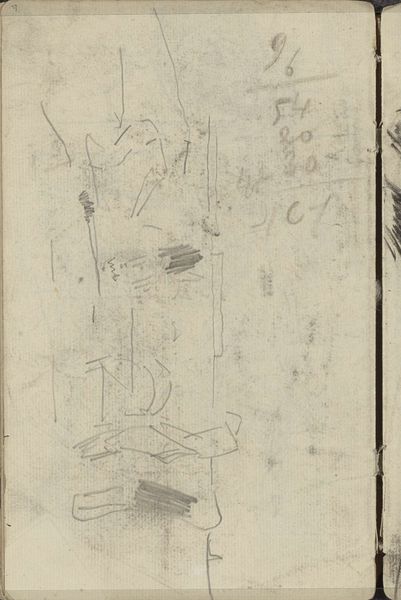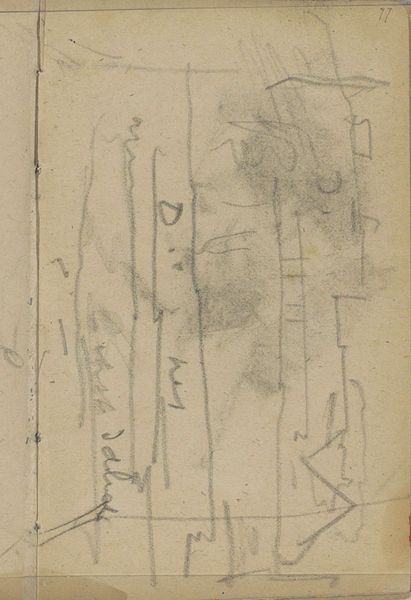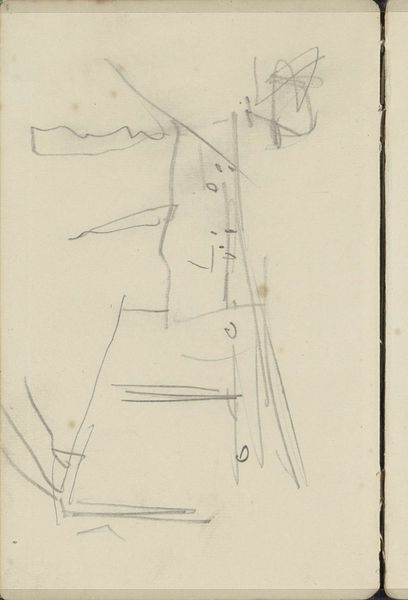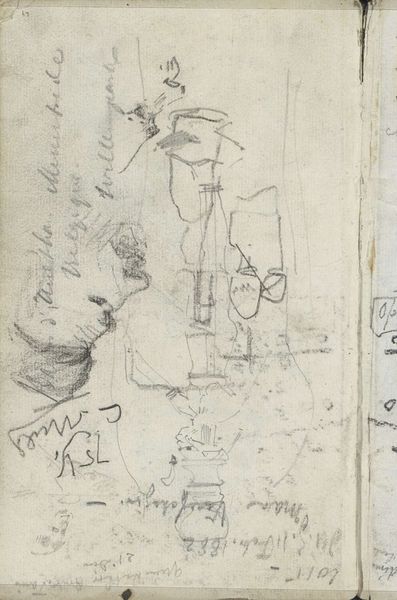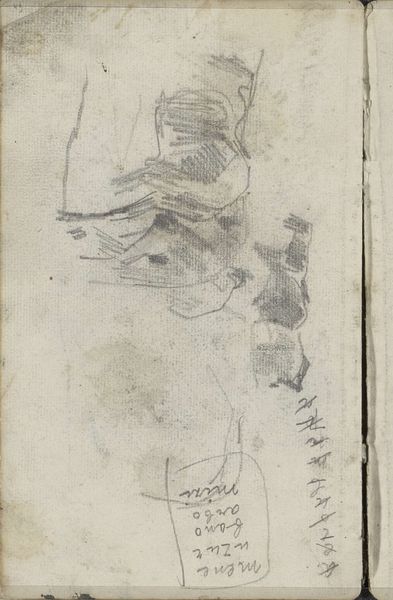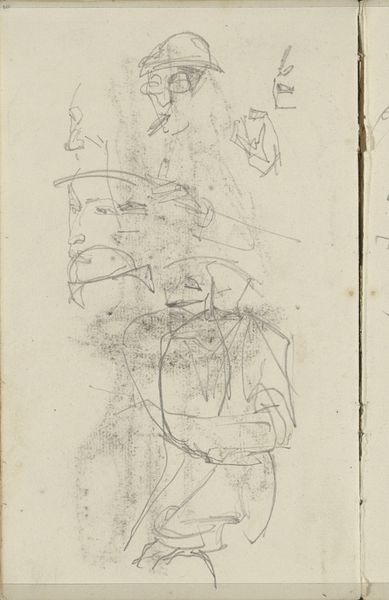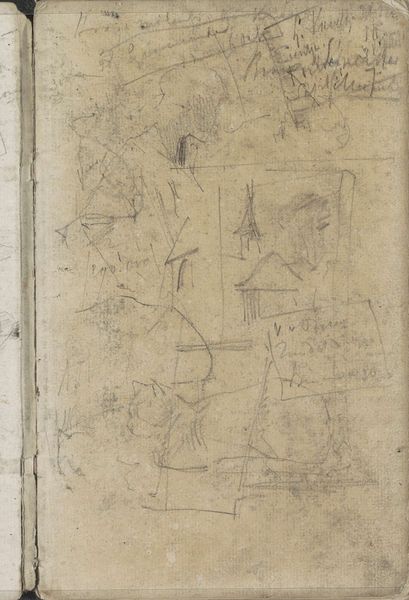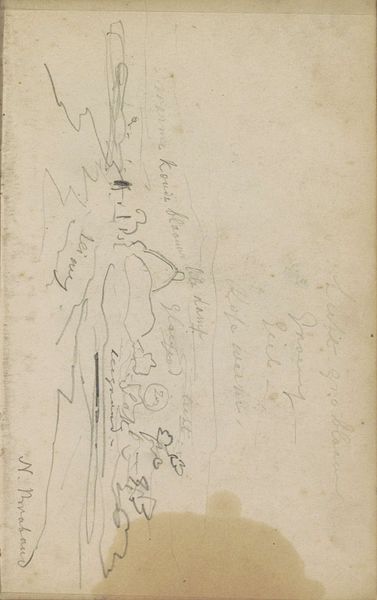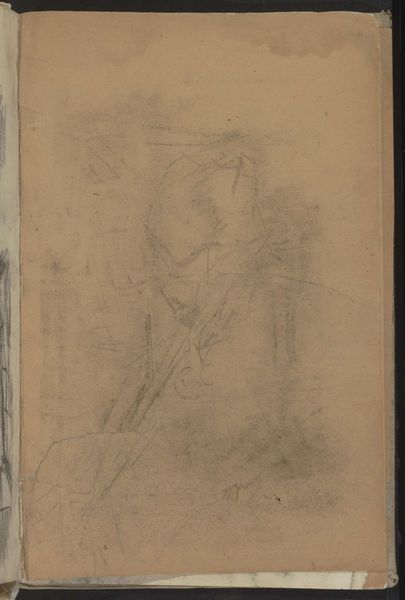
drawing, pencil
#
drawing
#
impressionism
#
figuration
#
pencil
Copyright: Rijks Museum: Open Domain
Curator: What a whirlwind of line work! It feels so immediate, almost frantic. Editor: Indeed. We're looking at George Hendrik Breitner’s "Figuurstudies," or "Figure Studies," a pencil drawing dating from between 1884 and 1886. It is currently held in the Rijksmuseum's collection. Breitner's work at this time reflected a move away from academic painting toward the gritty realism he observed in Amsterdam's streets and perhaps a critical lens toward the conventional bourgeois ideals, choosing subjects that reflected daily life. Curator: It’s more than just realism, isn't it? The almost transparent quality gives the figures a sense of ephemerality—like they might disappear any moment. See how the lines are hatched and cross-hatched? It lends the forms a three-dimensionality but it's more like a sculptor working rapidly in clay, quickly building up the shape. Editor: And that's a telling detail. Breitner engaged deeply with the social realities of his time. The city was changing rapidly, class divisions were pronounced, and the rise of photography threatened traditional modes of representation, perhaps spurring a need to innovate—making this type of raw sketch not just preparation but a valid study of his time. His involvement in social change aligns with how his contemporaries depicted similar struggles. Curator: Exactly! He presents us with something incomplete, and dares us to see not the perfect body but an individual defined by an era. Notice that no figure is completed and brought into solid existence but instead allowed to blend into and almost fade into the blank paper, only emphasizing form in specific areas. The strategic contrast and strategic dissolving allows each figure to still occupy real space within the image. Editor: He uses a kind of visual shorthand. He seems less interested in polished surfaces and more intent on capturing movement, a fleeting pose. Perhaps Breitner's method speaks to broader shifts in the art market at the time. Mass media was impacting not only visual art, but public interest. Curator: What a powerful commentary! Well, on that note, this close inspection really opened my eyes to how deeply connected form is to the forces of culture and representation. Editor: And I, for one, see the socio-political context in an entirely different light now by reexamining the art’s intrinsic visual expression.
Comments
No comments
Be the first to comment and join the conversation on the ultimate creative platform.
